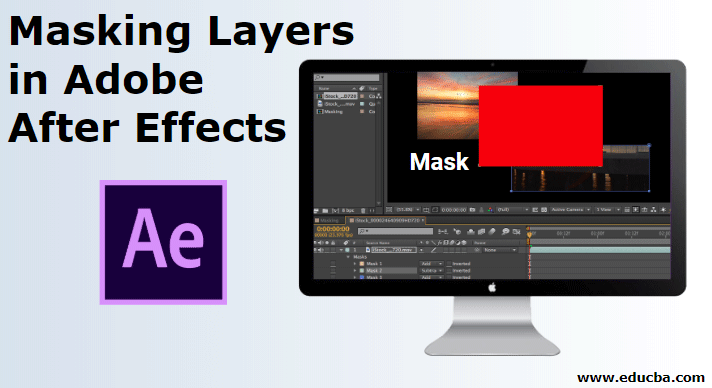

You’ll notice that there are no Fill/Stroke options since the shape will be applied as a mask on the active layer. Select the Ellipse tool from the Shape tool dropdown.Make sure the Text Layer is selected/highlighted in the Timeline.But in order to do so, (rather than create a new layer) an existing layer must be selected: The Shape, Pen and Text tools can all be used to create Masks. Go to Layer > Transform > Center in View.Go to Layer > Transform > Center Anchor Point in layer Content.


We’ll also center the layer on the Composition:

ADOBE AFTER EFFECTS MASKING HOW TO
This simple tutorial will demonstrate how to create and edit Masks You can watch the finished example below and download the. Masks also have their own properties and can change over the course of the animation. Masks have to be created within an existing layer and will move alongside it (i.e: if a layer moves from the top to the bottom of the composition, its mask will follow it). Mask applied to a Text Layer (inside the Text Layer in the Timeline Window) While Masks are applied to an existing layer (and will be created as a sublayer), Mattes are created as independent layers that are subsequently paired with another one. Masks and Mattes can help you achieve this. This is going to allow us to drop this in on another layer for a cool composite effect.You might want to hide and reveal parts of a layer in your animation. But what's really cool is that it's creating sort of a button effect here with movement in the footage. Now we've got buttons that work well with a stroke edged to help them stand out as we position them. And we're just going to adjust the width of that a bit, make it a little thicker. Now we could turn the layer on and apply it with a style. Instead, I'm just going to duplicate that layer and put another copy down below with the track matte set to none. That's because it's expanding the size of the layer which then expands the size of the cookie cutter. Now, in this case, if I apply the stroke to the layer on top, you're going to notice that it doesn't work quite exactly right. There we go, and we can adjust the property, let's set that to bigger size. And what I'll do is apply a white stroke as a border. So if we go to layer, layer styles, I could add a stroke. So with that layer selected, layer styles are applied after the effect. Now, what I could do is actually apply a layer style. Let's zoom in there a little bit, and you see it's a subtle but attractive effect with the animation. The buttons appear to have liquid that are moving. And you see that we've got cool animated effects inside. I'm going to scale that footage a little bit just to make it fit. I can say, use the alpha channel above, and you see that the footage is now trapped inside the icons, which is pretty cool. Or in this case, because they actually have transparency. I can select the footage below and say, use the luminosity of the layer above, and it cuts. And what I want to take advantage of is track matte. If you don't see this, click the toggle, switches, and modes. And what I'd like to do now is fill them in with some moving footage. In this case, we've really modified these icons. There's lots of things you could do with one layer to another layer, including using it to cut a hole.


 0 kommentar(er)
0 kommentar(er)
